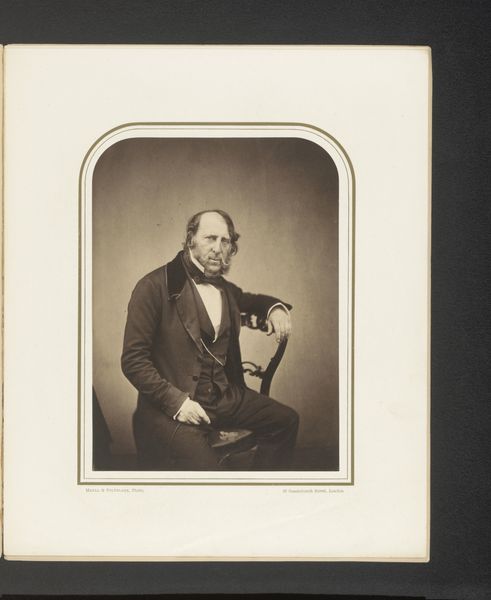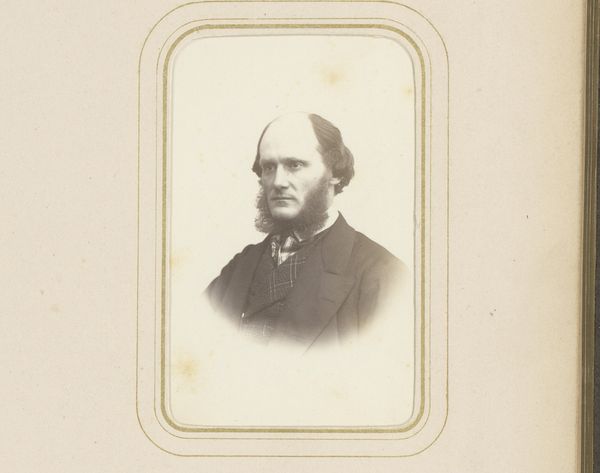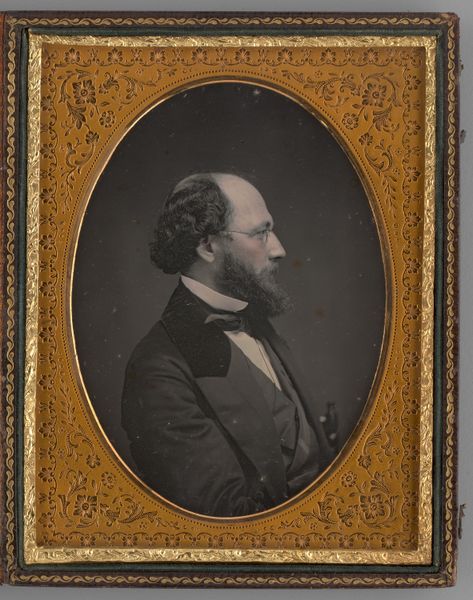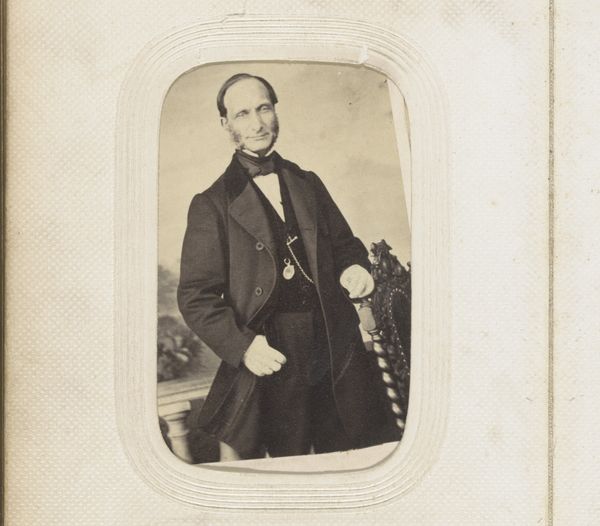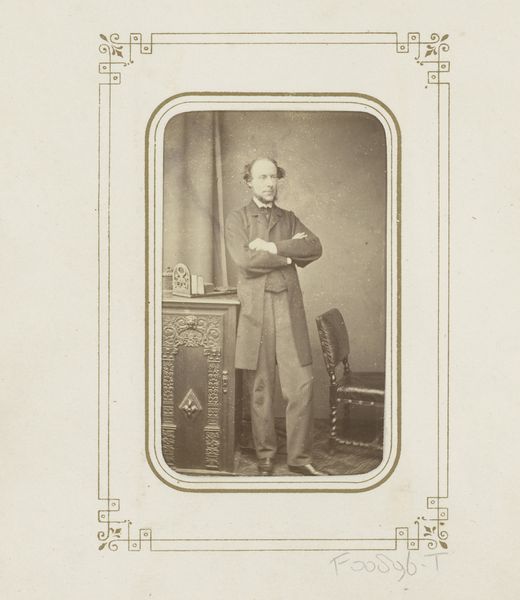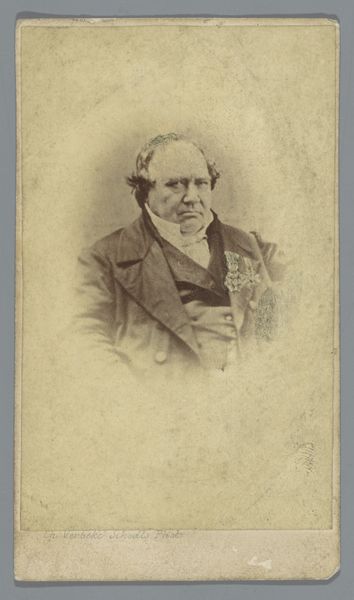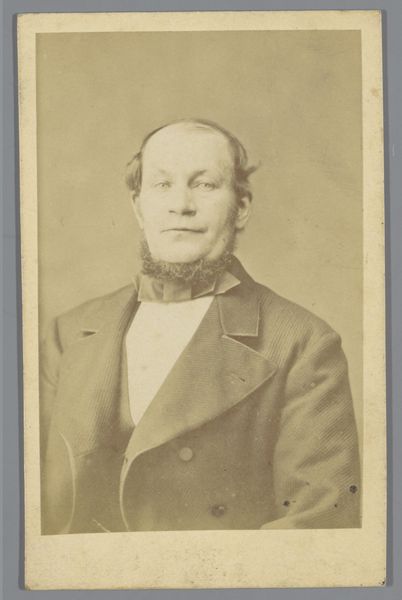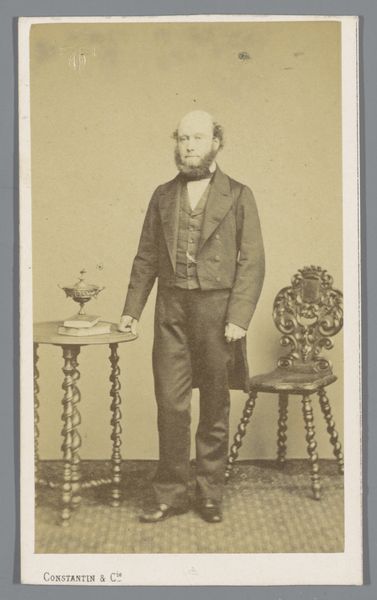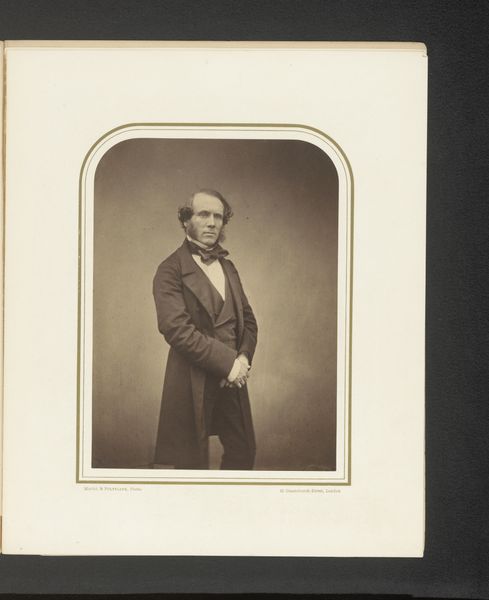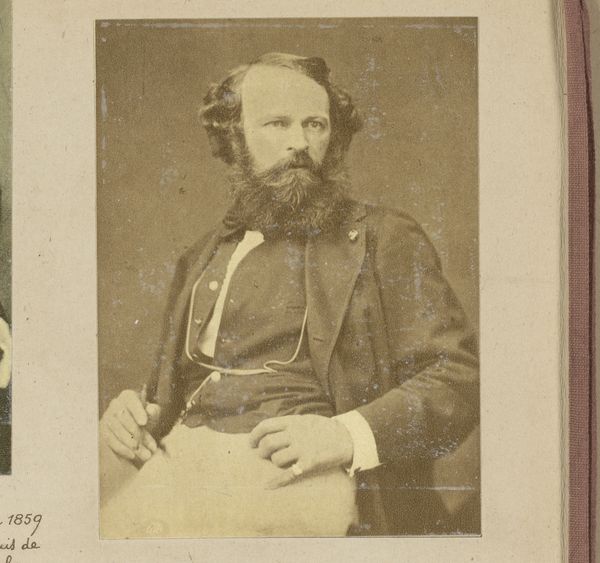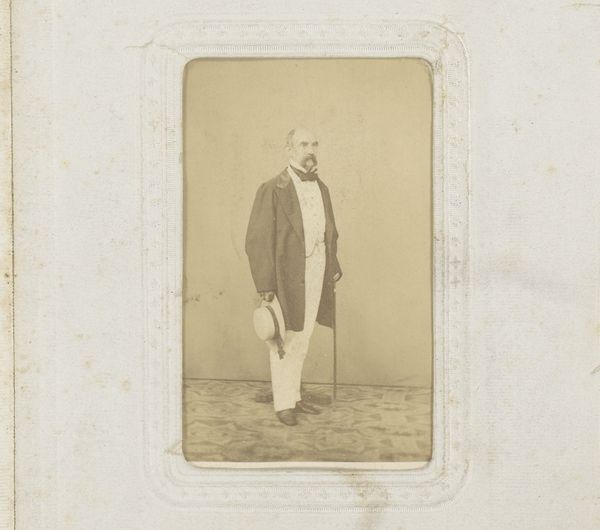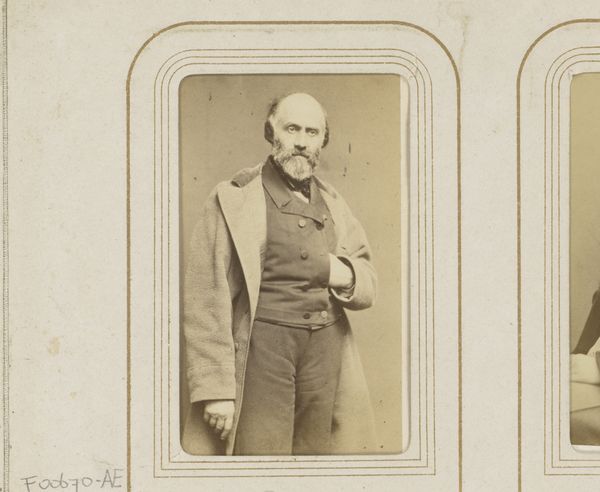
photography, albumen-print
#
portrait
#
photography
#
historical photography
#
19th century
#
albumen-print
#
realism
Dimensions: height 84 mm, width 53 mm
Copyright: Rijks Museum: Open Domain
Editor: So here we have a photograph, "Portret van een zittende man met ringbaard" made between 1860 and 1900 by George Robert Fitt using the albumen print method. The details are astonishing for this early photographic process, it really jumps off the surface! What draws your attention to this work? Curator: As a materialist, I'm immediately interested in the albumen print itself. We should remember that in the 19th century, photography was rapidly shifting from a luxury good for the elite to a wider, though still controlled, form of image production. Who had access to such methods, and what impact did its process and visibility have on the subject’s social position? Editor: That’s an interesting point about the material's role in reflecting societal structures. What does the choice of material communicate about the sitter and the artist? Curator: The albumen print was popular because it produced sharp, detailed images, which lent an air of scientific accuracy. It allowed for multiple copies, thus, expanding the portrait’s reach and the sitter’s likeness and social capital. Look at the subtle tonalities, the way the light hits the man's beard – all achieved through careful manipulation of the chemistry involved. Editor: Right, it's easy to overlook the labor involved in creating the plate and print! The inscription at the bottom suggests a commercial studio? Curator: Exactly. The address "100 Regent" would likely denote a business location. Fitt was producing these images, not purely for art's sake, but within the constraints and demands of a developing industry and economic marketplace. What narrative does that reveal? Editor: I never thought about how the commercial context and materiality so deeply influences our understanding. Curator: Considering the socio-economic conditions tied to both the production and consumption of images is the most productive thing that we, as historians, can consider in art of any type.
Comments
No comments
Be the first to comment and join the conversation on the ultimate creative platform.
